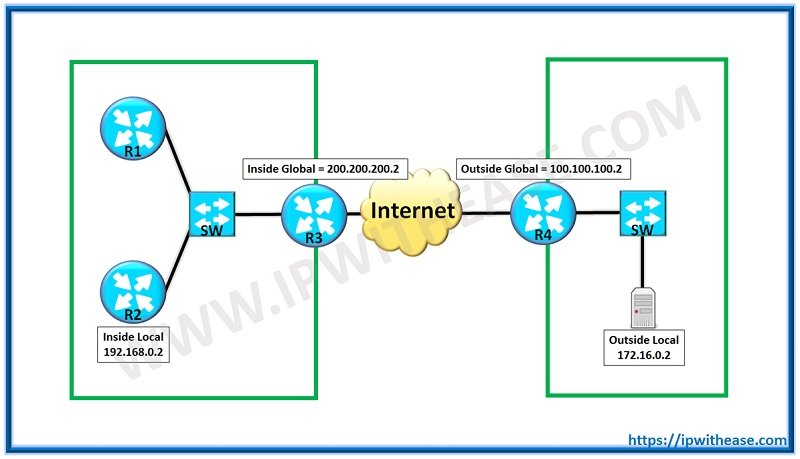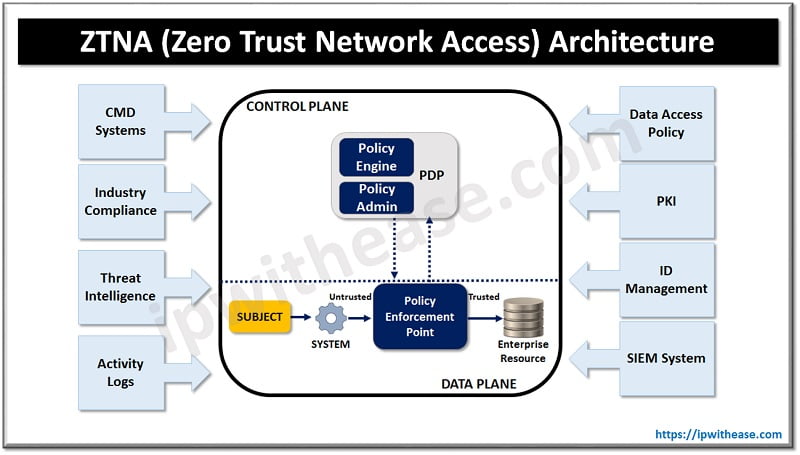NAT ( Network Address Translation )
NAT (abbreviation for Network Address Translation) is described in RFC 1631. NAT feature allows IP network of an organization to appear from the outside to use a different IP address space (Globally Routable) than what it is actually using (Non Routable Private IP Address).
Related – NAT Interview Questions and Answers
Thus, NAT allows an organization with non-globally routable addresses to connect to the Internet by translating those addresses with globally routable address space.
Below are some of the key terms related to NAT which play a pivotal role in IP address Translation:
Inside Local Address
Inside Global Address
Outside Local Address
Outside Global Address
However, let’s discuss the fundamentals by breaking up the above terms:
- Inside = Under the control of the company or customer. This will reside inside the network.
- Outside = Customer or company can’t control and reside outside the customer network.
- Local = Private addresses under RFC 1918 . This refers to what happens on the inside of your network.
- Global = Public IP addresses which are Globally routable addresses. This refers to what happens on the outside of the customer network.
Now when we understand the basics of each word, lets come back to the 4 key terms of NAT :
Inside Local Address –
Private addresses that the company can control. This is the IP address assigned to an end host on the inside [p2p type=”slug” value=”what-is-local-area-network”]LAN[/p2p] network.The IP address is provided by the company itself and is not required to be taken from IP address authority or Service provider. This address is likely to be an RFC 1918 private address.
Inside Global Address –
Public addresses that the company can control. An example is the IP address ISP provides to the organization and is a Globally routable IP address assigned by the service provider. Inside global address represents one or more inside local IP addresses to the outside world ie translates from inside Local address and is seen by the outside world on the Internet.
Outside Local Address –
Private Addresses that are outside of company/organisation control. This is the address that the inside hosts use to refer an outside host. The outside local address may be the outside host’s actual address or another translated private address from a different private address block. In other words – The IP address of an outside host as it is known to the hosts on the inside network.
Outside Global Address –
Public addresses that are outside of company control. These are Globally Routable addresses and is the public IP address assigned to the end device on the other network to communicate over the internet. The owner of the host assigns this address.
Below diagram will help put more clarity on the 4 types of addresses discussed above:
ABOUT THE AUTHOR

You can learn more about her on her linkedin profile – Rashmi Bhardwaj




